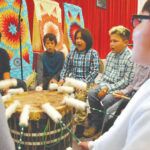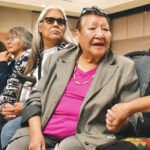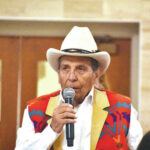Survivors say trauma from abusive Native American boarding schools stretches across generations



BOZEMAN, Mont. — Donovan Archambault was 11 years old in 1950 when he was sent from the Fort Belknap Indian Reservation in Montana to a government-backed Native American boarding school in Pierre, South Dakota, where abusive staff forced him to abandon his community’s language and customs.
Archambault emerged bitter from the experience and said he drank alcohol for more than two decades before he finally pulled his life together, earning a master’s degree in education and serving as chairman of the Fort Belknap tribes.
“It was probably the most brutal time of my whole life,” Archambault recalled Sunday, “and it all stemmed from the trauma we suffered in the Pierre Indian School.”
Decades after the last Native American boarding schools stopped receiving federal money, the traumas inflicted by the abusive institutions are getting belated attention through a series of listening sessions hosted by federal officials across the U.S.
For over 150 years, Indigenous children were taken from their communities and forced into the boarding schools, which systematically abused students to assimilate them into white society. Religious and private institutions ran many of the schools and received federal funding as partners in government programs to “civilize” Indigenous students.
Sunday’s event at Montana State University in Bozeman was the last of 12 stops on the “Road to Healing” tour by Interior Secretary Deb Haaland, a member of Laguna Pueblo in New Mexico who has prioritized examining the trauma caused by the schools.
The U.S. enacted laws and policies in 1819 to support the schools and some continued to operate through the 1960s. An investigative report released last year by the Interior Department identified 408 government-backed schools in 37 states or then-territories, including Alaska and Hawaii.
The schools renamed children from Native American to English names, organized them into military drills and compelled them to do manual labor such as farming, brick-making and working on the railroad system, according to federal officials.
At least 500 children died at the schools, according to the report — a figure that’s expected to increase dramatically as research continues.
One of Haaland’s deputies, Rosebud Sioux member Wizipan Garriott, has described boarding schools as part of a long history of injustices against his people that began with the widespread extermination of their main food source — bison, also known as buffalo.
Tribes also lost their land base and were forced onto reservations sometimes far from their homelands.
Victims and survivors of the schools have shared tearful recollections of their experience during prior listening sessions in Oklahoma, South Dakota, Michigan, Arizona, Alaska and other states.
They told stories of being punished for speaking their native language, getting locked in basements and their hair being cut to stamp out their identities. They were sometimes subjected to solitary confinement, beatings and withholding food. Many left the schools with only basic vocational skills that gave them few job prospects, officials said.







